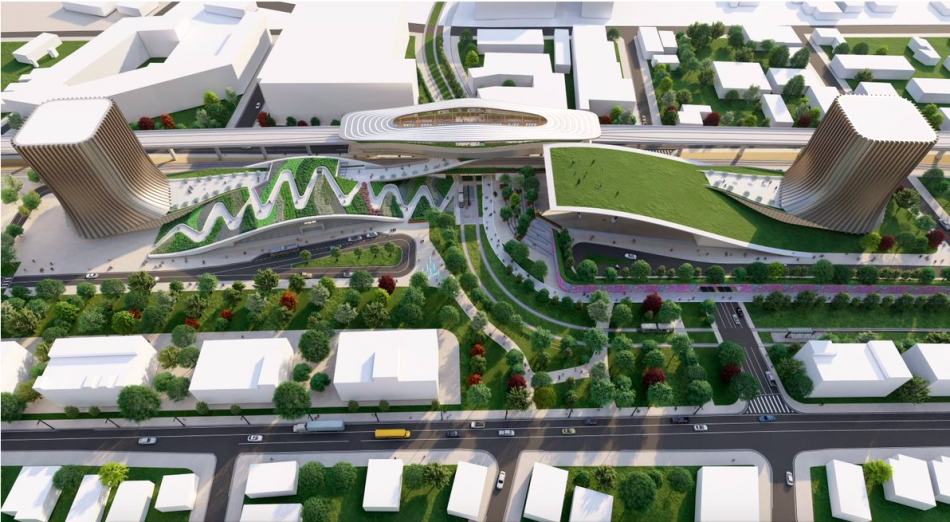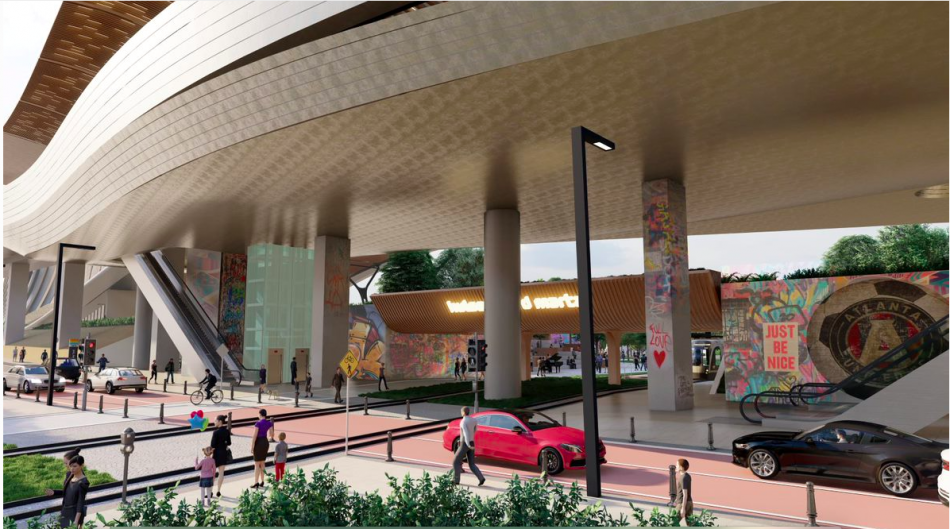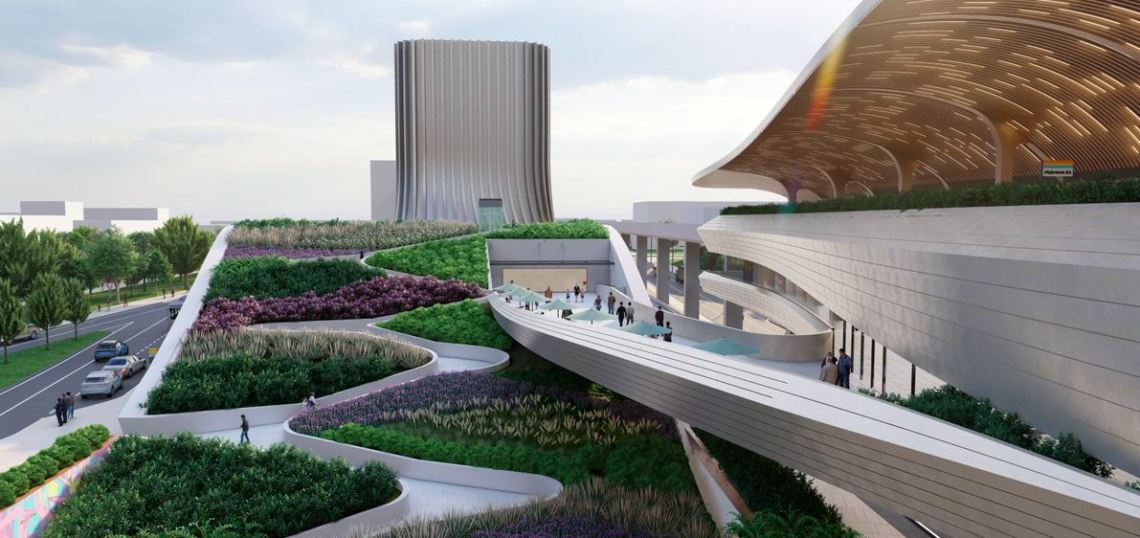Let’s be clear, off the bat, that MARTA Mountain is not an official proposal in any capacity. But neither was a wild concept called the Atlanta BeltLine when hatched in a Georgia Tech graduate thesis a quarter-century ago.
On the same fertile intellectual ground that sowed the seeds for John Portman’s sky-high architectural statements and Ryan Gravel’s transformative 22-mile loop, Urbanize Atlanta was honored last month to take part in a jury to decide which Georgia Tech School of Architecture graduate students would win this year’s Portman Prize.
Seventy-six grad students, divided into teams of two, were tasked with investigating metro Atlanta’s most outdated and in-transition infrastructures and devising sophisticated ways in which they could be improved, with an emphasis, in most cases, on economic recovery and social equity.
Of the 37 projects, 14 finalists were picked for presentations to jurors during a recent Saturday at the Hinman Research Building. They ran the gamut from a Connector-capping concept called “The Groove,” to beautiful, educational facilities that would actually clean Proctor Creek while providing recreational water access to nearby residents, to a health clinic near downtown Union City that would artfully fuse greenspace and medical-focused architecture. The ideas were both inspired and inspiring. Nobody was scored on practicality or potential costs.
What was at stake? Only $7,000 divided among three winning concepts and internship opportunities at Portman Architects this summer. According to professor and contest organizer Kai-Uwe Bergmann, a partner at Bjarke Ingels’ BIG architecture firm, winning is among Georgia Tech’s “most prized achievements.”
Jurors included Ryan Gravel himself, City of Atlanta Office of Design interim director Doug Young, Atlanta Design Festival cofounder Elayne DeLeo, and architects from around the country (Claire Weisz, FAIA, Marlon & Ati Blackwell, FAIA) and abroad (Jeremy Smith), among others.
The second presentation of the day—MARTA Mountain, compiled by graduate students Ayaz Babu and Joseph L’Heureux—stood out as being of particular interest to readers here.
 Overview of the MARTA Mountain concept hypothetically replacing acreage at today's Hulsey Yard. The two large tower structures bookending the station are placeholders for dense housing. Designs by Ayaz Babu and Joseph L’Heureux
Overview of the MARTA Mountain concept hypothetically replacing acreage at today's Hulsey Yard. The two large tower structures bookending the station are placeholders for dense housing. Designs by Ayaz Babu and Joseph L’Heureux
Fusing MARTA rail transportation with the BeltLine’s most patronized segment, the concept demonstrated imagination, audacious scale, stacks of needed housing, and a means of unlocking transit access to thousands of people surrounded by versatile greenspace so unusual (if not outlandish) it could immediately become iconic. Add to that inviting public social spaces, a centralized café, elegant rooflines around “Hulsey Yard MARTA,” and a dynamite fly-through video—and we were sold.
The students’ goal was to show an example of a future MARTA station that’s much more than a hub for catching trains and buses. They hoped to build on visioning work compiled by architecture firms like Lord Aeck Sargent—back when it appeared the massive rail yard might actually become available for redevelopment.
“We’ve found that MARTA needs more stations and more lines to make it more reasonable to use,” L’Heureux explained after the competition. “When looking at where people are wanting to go in Atlanta, the BeltLine is at the top of the list, and further looking at the existing stations, there are none that meet the BeltLine.
“MARTA in the past has been a divider [of neighborhoods], but it doesn’t have to stay that way,” L’Heureux continued. MARTA Mountain aims “to transform MARTA into a mechanism for community and connection, [and] we believe this station is one way to bring that change.”
 A futuristic interpretation of Krog Street Tunnel (circa, maybe, 2040?). Designs by Ayaz Babu and Joseph L’Heureux
A futuristic interpretation of Krog Street Tunnel (circa, maybe, 2040?). Designs by Ayaz Babu and Joseph L’Heureux
Alas, following the esteemed jury’s voting (and despite our obnoxious, closed-door lobbying), the MARTA Mountain concept did not finish in the top three for the Portman Prize, which speaks to the quality of competition. (We’ll spotlight the winning concept—and $4,000 cash recipient—on these pages later this week.)
For now, let your imagination take precedent over practical constraints, and behold this mountain-sized, outside-the-box vision for a dynamic, futuristic, multimodal MARTA station in the above video and, for additional images, in the photo gallery.
[UPDATE: 12:54 p.m., May 3: Georgia Tech officials changed the allotted prize money for the contest prior to judging: The amount awarded is $7,000 total, and not $7,000 for first place.]
...
Follow us on social media:
• Georgia Tech news, discussion (Urbanize Atlanta)






